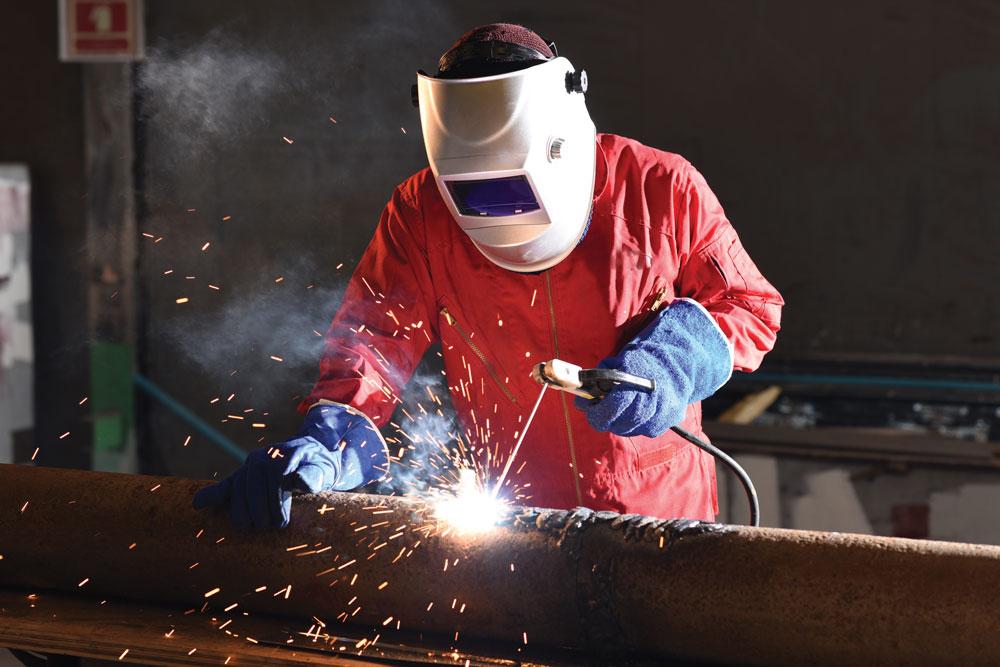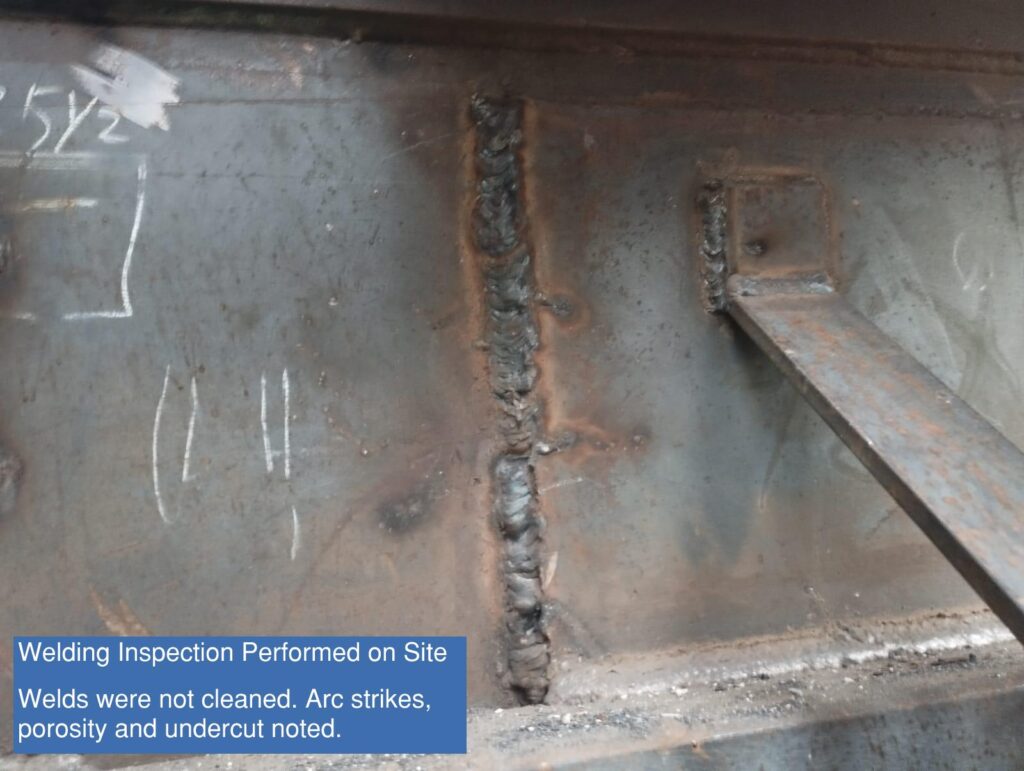Welding Inspection Racine: Making Sure Accuracy and Dependability in Every Weld
Innovative Approaches to Fillet Weld Evaluation and Testing: Enhancing Weld High Quality and Conformity Specifications
In the world of welding, the high quality and integrity of fillet welds play an important function in ensuring the architectural stability and reliability of different industrial parts. With the constant drive for boosted effectiveness and conformity with stringent criteria, the exploration of cutting-edge techniques to fillet weld evaluation and screening has come to be essential.
Advanced Non-Destructive Screening Techniques
Utilizing advanced technologies, progressed non-destructive screening methods play a crucial function in ensuring the stability and top quality of fillet welds. These techniques, such as phased selection ultrasonic testing (PAUT) and magnetic bit screening (MPT), offer in-depth understandings into the weld's interior structure without triggering any kind of damage to the material. PAUT, for example, utilizes several ultrasonic components to examine the weld from numerous angles, offering an extensive visualization of possible issues like lack of fusion or splits.
Similarly, MPT is efficient in detecting surface-breaking problems by applying a magnetic field and iron bits to the weld location. This method is especially helpful for determining gaps that may jeopardize the weld's stamina. By using these innovative non-destructive screening techniques, weld inspectors can accurately assess the quality of fillet welds, guaranteeing conformity with sector criteria and guidelines. The ability to detect flaws at an early stage not only boosts weld top quality yet additionally protects against pricey rework or failings in architectural stability, highlighting the importance of these cutting-edge screening techniques in welding assessments.
Robotics and Automation in Inspection
The assimilation of robotics and automation has revolutionized the examination process for fillet welds, boosting effectiveness and accuracy in high quality assessment. Robotics use accurate control and repeatability in inspecting welds, making sure trustworthy and consistent outcomes. Automated systems can be programmed to comply with specific assessment paths, making certain complete coverage of welds and minimizing the risk of human error.
Robot inspection systems furnished with advanced sensing units can spot and gauge weld features with high precision, giving detailed data for evaluation. These systems can identify problems such as fractures, lack of combination, and porosity, making it possible for punctual restorative activities to be taken. In addition, robotics and automation allow for real-time data collection and evaluation, giving immediate comments to drivers and helping with fast decision-making procedures.
Furthermore, using robotics and automation in fillet weld evaluation enhances total performance by reducing inspection times and enhancing assessment throughput. By enhancing the examination procedure, manufacturers can ensure weld quality and compliance standards are satisfied efficiently, eventually causing set you back financial savings and improved item high quality.
Using Artificial Knowledge for Analysis
Man-made intelligence plays an essential duty in boosting the performance and precision of analysis in fillet weld evaluation processes. By harnessing the power of AI, inspectors can streamline the evaluation of weld top quality and compliance criteria, bring about extra trusted and exact results. AI algorithms can swiftly refine vast quantities of information this post from weld examinations, spotting problems or disparities that may be challenging to understand the nude eye. This innovative modern technology allows real-time monitoring of weld top quality, enabling for immediate rehabilitative activities to be taken if any concerns are identified.
Additionally, AI systems can gain from previous inspection data, continuously improving their ability to determine possible defects and deviations in fillet welds. This adaptive understanding capacity enhances the total quality assurance procedure, reducing the possibility of human error and making sure that welds fulfill the called for standards. By integrating expert system right into fillet weld evaluation, sectors can attain greater degrees of efficiency, consistency, and compliance in their assessment techniques.
Portable Devices for On-Site Examination
 Enhancing field assessment performance, the fostering of portable devices reinvents on-site assessment procedures for fillet welds. These devices offer flexibility and benefit, enabling examiners to carry out complete exams in numerous areas, consisting of challenging or remote settings. Mobile tools such as ultrasonic testing tools, magnetic bit examination tools, and electronic radiography systems provide real-time information and high-resolution imaging abilities, enabling quick decision-making and prompt feedback on weld quality.
Enhancing field assessment performance, the fostering of portable devices reinvents on-site assessment procedures for fillet welds. These devices offer flexibility and benefit, enabling examiners to carry out complete exams in numerous areas, consisting of challenging or remote settings. Mobile tools such as ultrasonic testing tools, magnetic bit examination tools, and electronic radiography systems provide real-time information and high-resolution imaging abilities, enabling quick decision-making and prompt feedback on weld quality.One significant advantage of mobile devices is their capability to streamline examination treatments, decreasing downtime and improving overall productivity. Assessors can conveniently deliver these devices to different work sites, eliminating the need for transporting hefty equipment or components to off-site centers. Furthermore, the mobility of these tools advertises cost-effectiveness by lessening transportation expenditures and increasing evaluation timelines.
Furthermore, using mobile tools for on-site examination promotes proactive top quality control steps, as assessors can immediately identify and resolve any type of potential welding defects or discrepancies. By including these ingenious technologies right into on-site inspection methods, welding professionals can make sure compliance with market standards and improve weld quality, eventually bring about enhanced architectural integrity and security in various welding applications.
Combination of Information Management Solution
Having actually optimized on-site examination processes with the application of portable tools, the following pop over to this web-site stage involves the seamless assimilation of information management systems to additionally boost performance and data analysis capacities in fillet weld inspection and testing. Welding Inspection Racine. By integrating data monitoring systems right into the inspection process, companies can simplify information collection, storage, and analysis. This combination permits real-time monitoring of weld quality, immediate identification of problems, and timely decision-making to remedy any kind of concerns that might arise during the inspection procedure
The assimilation of data monitoring systems enables smooth interaction between various stakeholders entailed in the evaluation procedure, fostering cooperation and enhancing general quality control procedures. Inevitably, the combination of information monitoring systems serves to boost the criteria of fillet weld inspection and testing, guaranteeing conformity with industry guidelines and enhancing weld high quality.
Conclusion
Finally, innovative methods to fillet weld assessment and testing have substantially boosted weld top quality and conformity requirements. Advanced non-destructive testing techniques, robotics, automation, expert system, mobile devices, and information monitoring systems have transformed the method weld examinations are conducted. By utilizing these innovations, markets can make certain that welds fulfill the required quality standards and guidelines, try this website eventually enhancing general performance and safety and security in welding procedures.

By employing these advanced non-destructive screening strategies, weld assessors can precisely examine the high quality of fillet welds, making sure compliance with market standards and regulations. Portable devices such as ultrasonic screening gadgets, magnetic bit examination tools, and digital radiography systems offer real-time data and high-resolution imaging abilities, enabling quick decision-making and prompt responses on weld high quality.
Having optimized on-site examination procedures with the usage of mobile devices, the following phase involves the smooth combination of data monitoring systems to better improve efficiency and information evaluation abilities in fillet weld inspection and screening (Welding Inspection Racine). Eventually, the integration of information monitoring systems offers to boost the requirements of fillet weld assessment and screening, making sure conformity with sector laws and improving weld top quality
 In conclusion, innovative approaches to fillet weld evaluation and screening have significantly improved weld high quality and compliance standards.
In conclusion, innovative approaches to fillet weld evaluation and screening have significantly improved weld high quality and compliance standards.